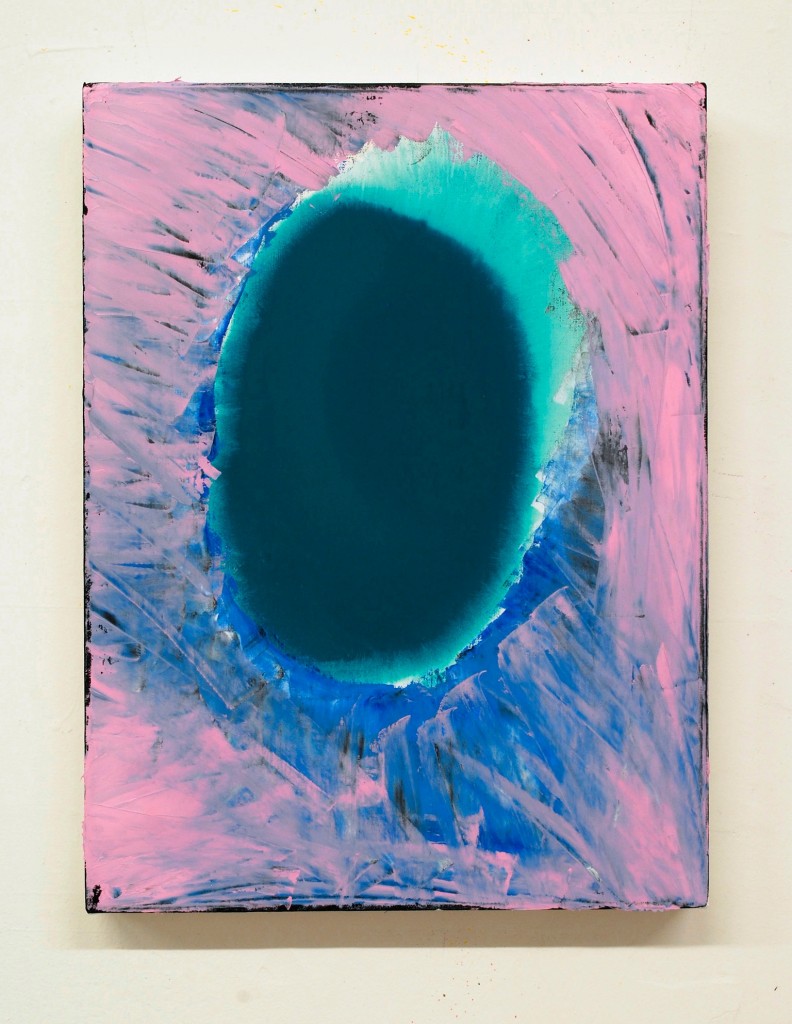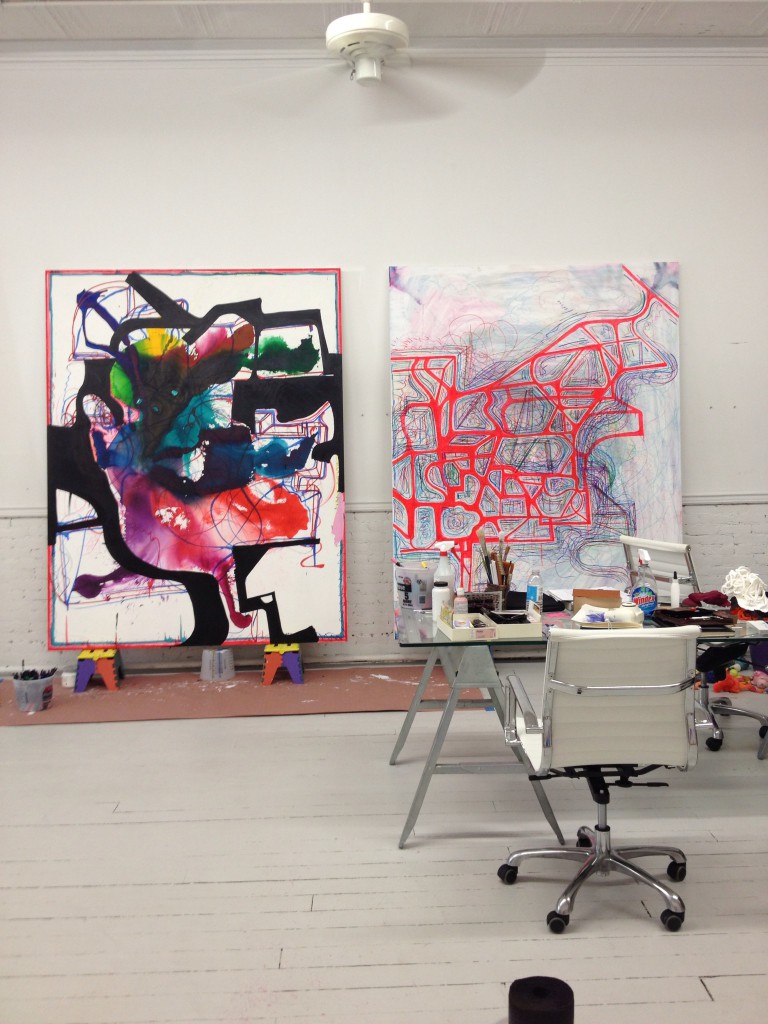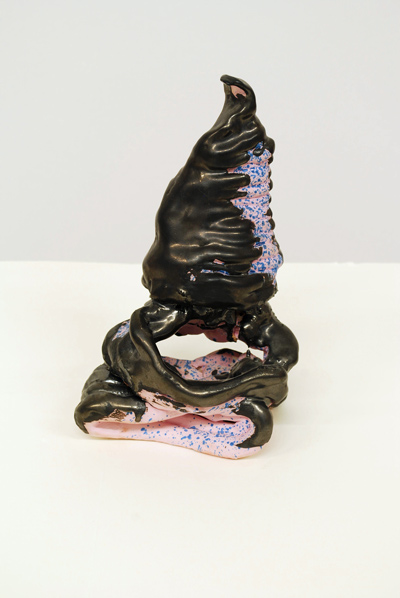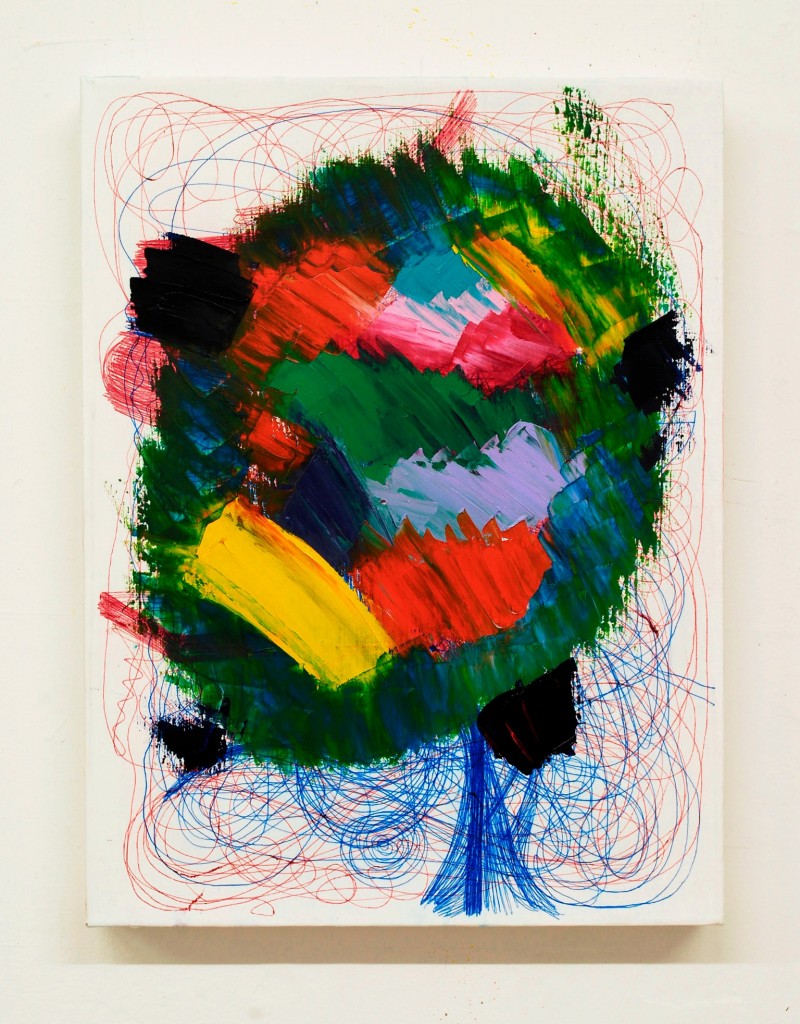“I’m not trying to craft the perfect thing,” –JG
I met Joanne Greenbaum at Wolfgang Betke’s and Britta Lumer‘s loft in Kreuzberg, where her small paintings were strung high, almost touching the molding. This remoteness didn’t dampen a radiant accessibility that has become a hallmark of Greenbaum’s expansive yet decidedly un-monumental (at least in scale) career. Her smaller works are instinctual and inviting, equipped with fluid baroque shimmers and flourishes that hint at bodily rapture and painterly automatism, something that occurs, according to the late/great Bob Ross, when we are “making love to the canvas.”

Joanne Greenbaum. Untitled, 2012. Oil on linen. 16 x 12 in. Courtesy of the artist.
“I don’t have a hard time being alone” –JG
Later in the week, I enjoyed a rather rapturous lemon bar with Greenbaum at a little Canadian bakery in Neukoelln. We talked about her work, her upcoming show at Nicolas Krupp in Basel, the differences between New York and Berlin, and making drawings in bed. The night before, Greenbaum went home and watched The Hunger Games with her dog Sheba and a drawing pad. This gesture is in keeping with Greenbaum’s practice, which she describes as “privately performative.” It’s about her body, and what her body wants. “I just make it,” she states, and “when it starts to feel familiar, I stop, and go in a fresher direction.”
“I don’t want to say it’s about process….but it is.” –JG
She wields a vast visual glossary, with her works sometimes reading like punchy, assured, confrontational statements and at other times ballooning quietly across the page like slow-capture botanical animation, never arriving at any kind of declaration. Gestures grow and shift on an exposed plane, framed by a soft and immediate architecture.

Joanne Greenbaum's studio, 2012. Courtesy the artist.
“People in Berlin still have their own faces, their own hair, their own bodies.” –JG
Greenbaum feels especially at home in Berlin and has been making yearly sojourns for a while now. She feels a kinship with the young women who bike carelessly around the city and lounge in cafes and kneipes with a Heidegger book and a sense of self-worth not connected to outward appearance or heavy personal grooming. In talking about these women, we discussed the slipperiest of words, authenticity, and freedom. These are especially central conceits in the story of Greebaum’s art. Her work, like that of Mary Heilmann, dodges the art world’s insistent demands on niche and nameability. Greenbaum’s work is authentic in the most literal way, with every mark and decision contributing to a transparent record of her process. Greenbaum doesn’t go over mistakes, instead, she reworks the piece to accommodate them. There is some kind of Kentucky moral/republican stump speech in there, I’m sure.

Joanne Greenbaum. Untitled, 2012. Glazed stoneware. 9 x 5 x 6 in. Courtesy of the artist.
“I don’t have any interest in making monumental sculptures.” –JG
Since 2004, Greenbaum has been making small ceramic pieces, solidifying the organic forms that colonize her paintings. These are different, sometimes entropic, slouching lazily and suggesting an anthropomorphism absent in her 2-D work. At other times, they resemble nominal household supporting items like bases, cases or columns. She doesn’t own a kiln, but rather works at a local ceramic studio amongst women who value the communal aspect of art-making. I could launch into a rant here about “elevating traditional female arts,” but I will spare you (and myself) that diatribe.

Joanne Greenbaum. Untitled, 2012. Oil and ballpoint pen on linen. 16 x 12 in. Courtesy of the artist.
Still, it’s important that Greenbaum makes ceramics. Just as it’s noteworthy that she uses ballpoint pen in so many of her pieces. Her frenzied marks are paired with oil paint, mingling the Untouchables and Brahmins of our media-based caste system. I wouldn’t describe her pen marks as child-like or naïve, but insistently selfish, dramatic, referring somehow to a grandiose teenage sense of self. For her upcoming exhibition at Greengrassi in London in January, Greenbaum plans to show around 200 smaller works, allowing viewers to piece together a sprawling gestural history that aspires not to the epic, but the intimate.




Pingback: Joanne Greenbaum Paintings | Mutantspace
Pingback: Research Bibliography – Fall, 2013 | Ren Adams - AIB MFA Blog